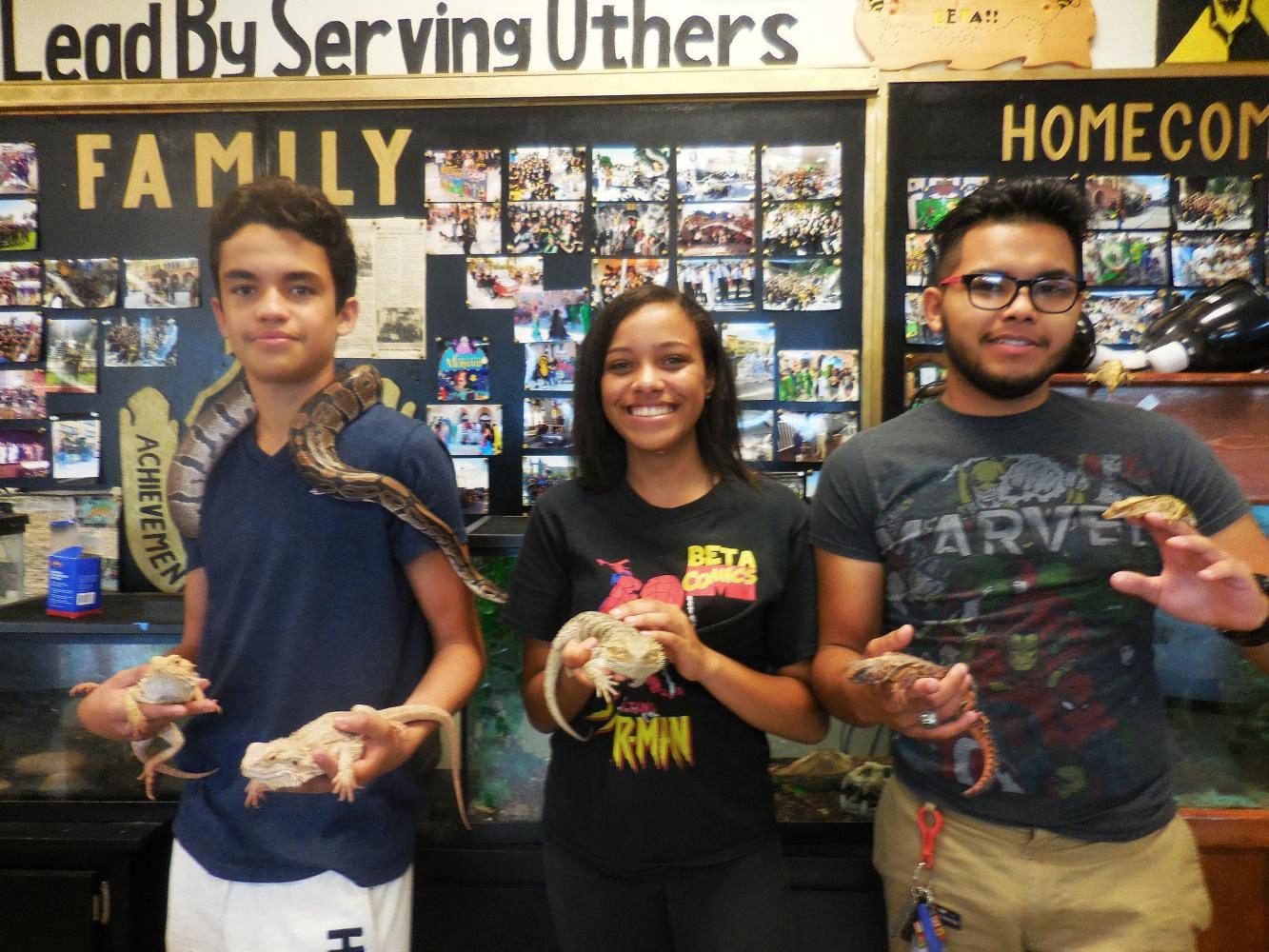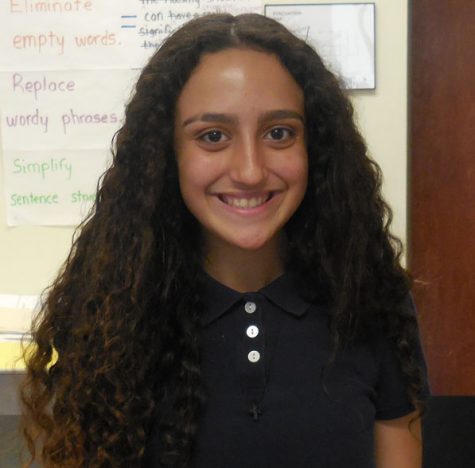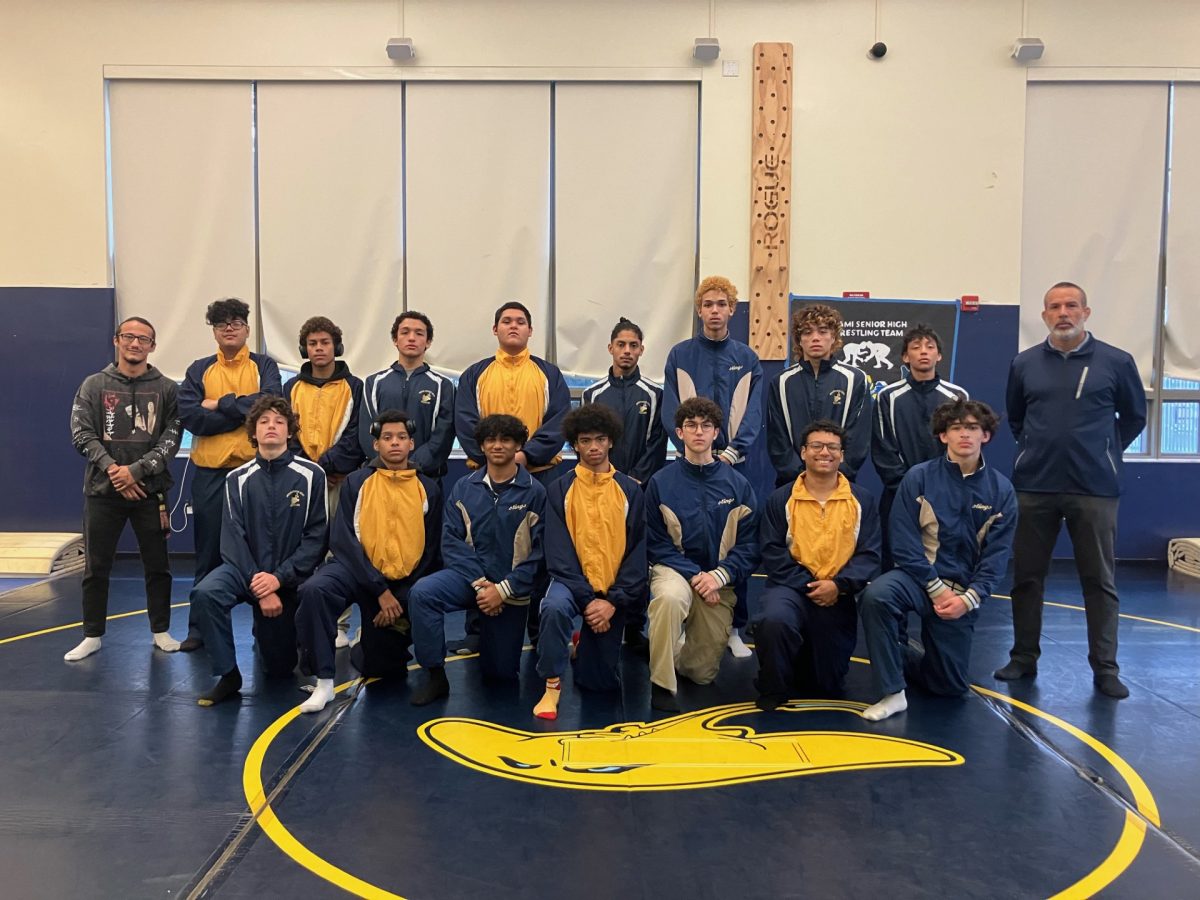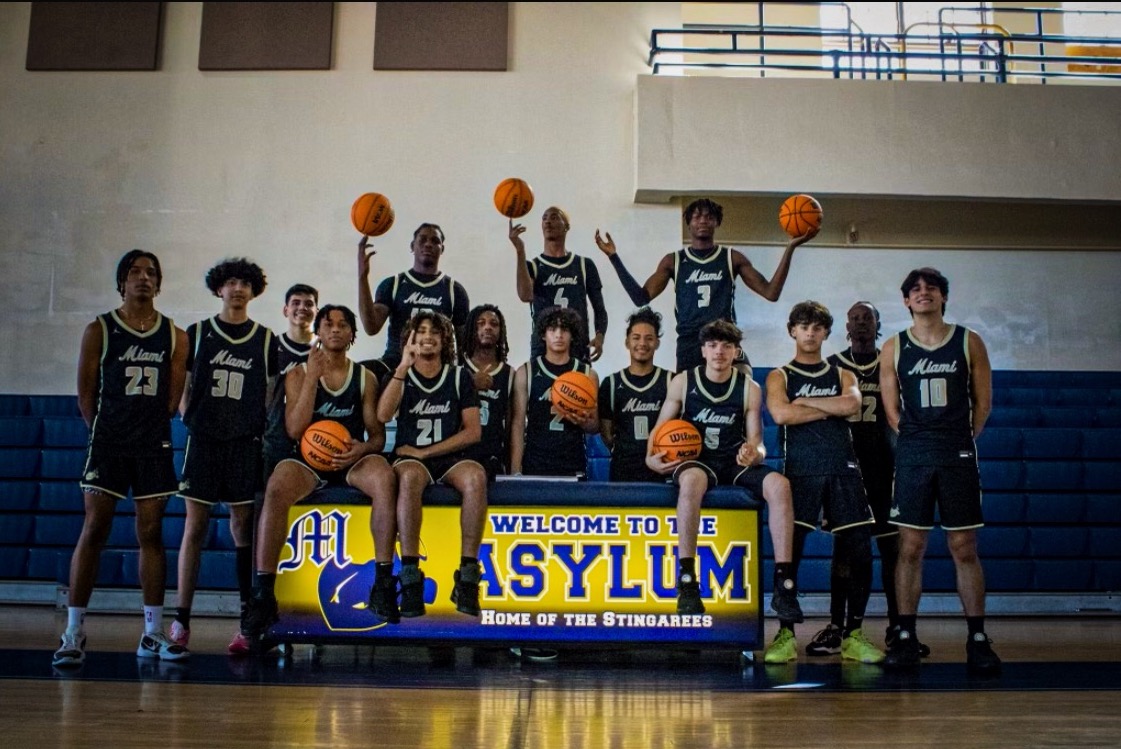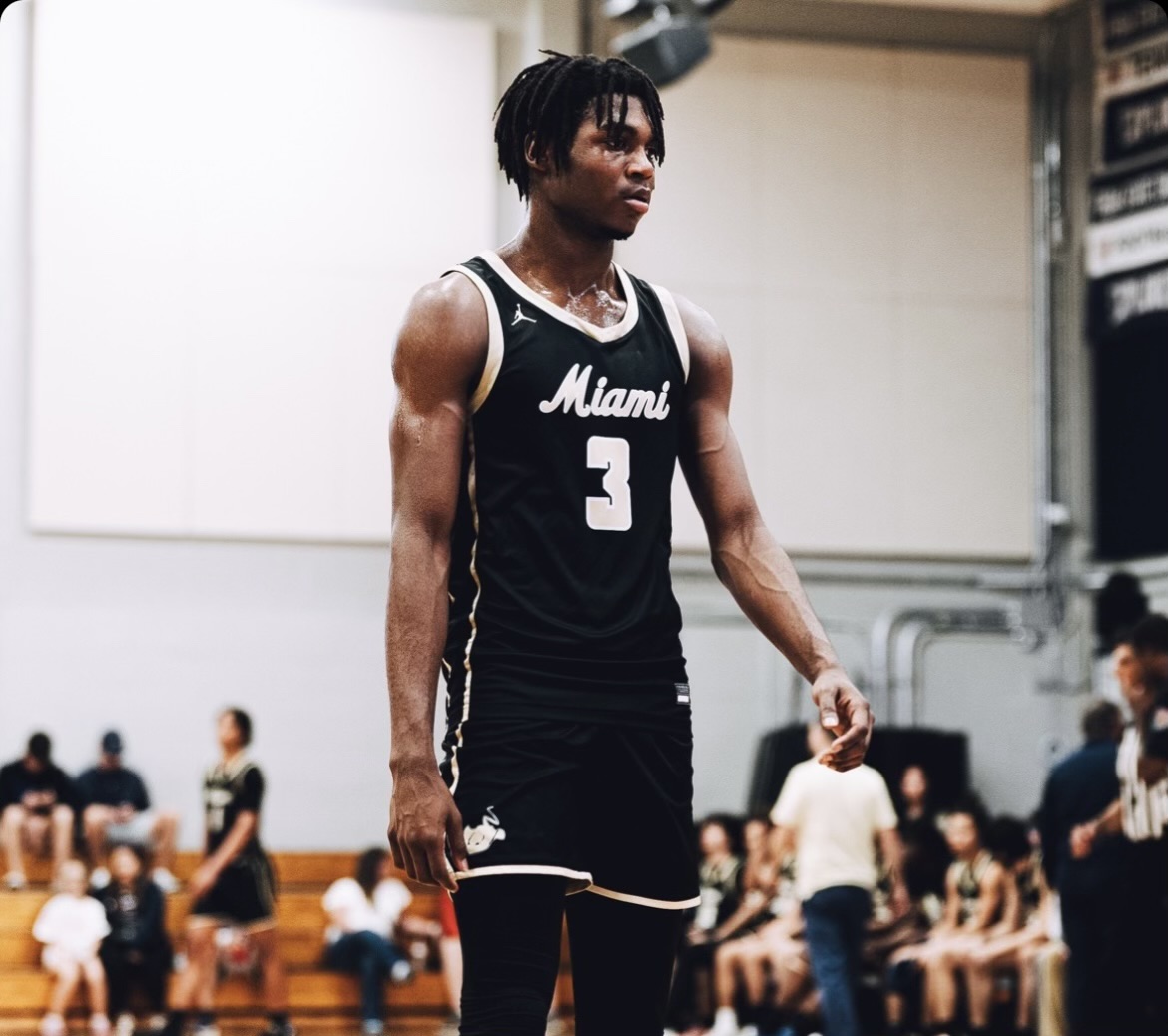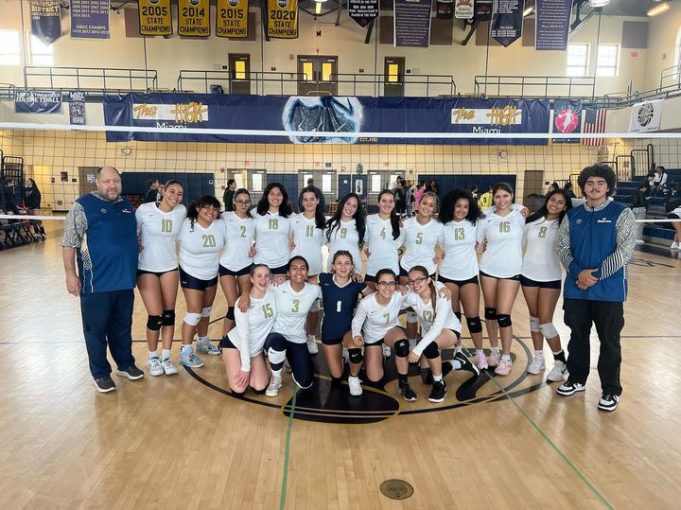The Wild Side of MHS
May 31, 2017
Miami High is a personal zoo,
Filled with reptiles, fish, and mammals too.
It’s a fantastic view,
When you’re able to,
Experience the things, some students do.
Here at Stingtown, class animals serve as more than cute and fuzzy pets; they play a very important role in the learning environment. Some of the animals that you’ll see are reptiles, mammals and fishes. Many students can actively learn and love them in their very own classrooms.
Teachers’ pets teach lessons
Biology teacher Mr. Sanchez, who has owned a ferret and a salt water fish tank for a year, decided to get pets because he thought It would help with his students, and he was correct. “The students get very engaged to the activity whenever Bandit the ferret is around,” he said.
Biology teacher Dr. Yoham, who has owned a fish aquarium for about 3 years, says that his fish provide a visual representation of real world biological situations like competition, photosynthesis, and cellular respiration.
English teacher Ms. Zamora, who shares Bandit with Mr. Sanchez, stated, “Having the ferret around teaches the students responsibility and an important lesson about loving and respecting the animals.”
Dr. Ricknauth, who teaches chemistry, anatomy and physiology, has 2 turtles and a fish. He says that the animals motivate the kids and give them a happier environment to learn in. “It’s refreshing to walk into a classroom and see something alive and active,” he added.
Science department chairperson Dr. Hueck, who teaches honors and AP chemistry, owns a variety of animals: snakes, tarantulas, leopard and Madagascar geckos, eels, salamanders, iguanas, bearded dragons, and many fish.
He believes that students do better academically in class when the animals are around. “The animals in class help ease anxiety and help motivate a student to do better,” he said.
Student learning improves with animals
Many students agree that the animals do enhance learning. Junior Leonardo Guerra, who took AP biology with Dr. Yoham, stated that the fish helped him understand some science concepts better. “I learned how fishes used osmosis to breathe and how their gills worked,” he said.
Sophomore Daiana Morales, who also took biology with Dr. Yoham, said that when it came to certain real world lessons, Dr. Yoham had the fish as a reference to be able to see what photosynthesis, cellular respiration, and competition are like.
Some students like the animals
Many students like having pets in class. Sophomore Rachel Valdes stated that they’re a great addition to the class environment by not having everything so plain all the time.
Lorena Martinez, a junior, said, “The animals are a great enhancement to the class socially and educationally.”
The downside of classroom pets
Some students, however, think these animals can disrupt learning. Sophomore Darius Wilson, who took Dr. Hueck’s class, stated that although the animals are very beneficial to a lesson, they can cause a distraction by the noises they make. “Once an animal starts making noise, the attention is drawn to them,” he stated.
Senior Jailenes Marante stated that the animals can cause a distraction when students always want to hold/play with them which can cause them to be off-task.
Other students see it two different ways. Class of 2019 president Amanda Echevarria stated that having pets makes the class more interactive. “But I also believe that if someone is afraid of them, teachers should keep the animals in their cages,” she added.
Scared of animals?
Some students can even overcome this fear. Sophomore Pamela Cardoza says that she had a fear of snakes, but decided to face it in Dr. Hueck’s class. “I had always wanted to face this fear, so I decided to face it, and the snakes were actually very friendly animals,” she said.
Ms. Zamora stated that the students start off scared, but it’s not so bad that the animal needs to be removed from the room.
Dr. Hueck said that he is very aware of the fears some of his students have of the animals, and says that his students in charge of the animals have respect and know not to take the animals around the students that are afraid of them. “I am always around whenever the animals are taken out of their cages,” he added.
“As a Biology teacher, I think it’s important to see real world situations with the topics I teach.” -Dr. Yoham
“Kids should know the responsibility and importance of loving and respecting animals.” -Ms. Zamora

